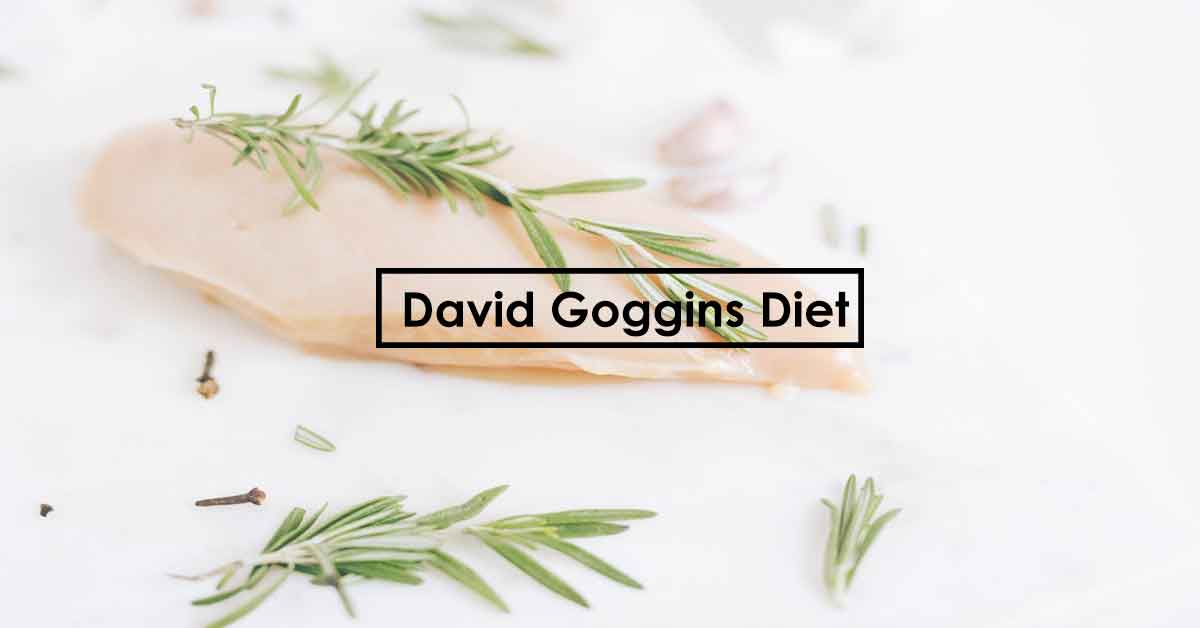David Goggins is not just another fitness enthusiast; he’s a living testament to the power of mental and physical resilience. A retired US Navy Seal and an ultra-endurance athlete, Goggins has set the bar high when it comes to pushing human limits. But what fuels this extraordinary man? The answer lies in his planned diet, which we’ll delve into in this comprehensive guide.
Macronutrient Split: 40/40/20
Goggins follows a strict macronutrient split, aiming for 40% of his calories from protein, another 40% from fats, and the remaining 20% from carbohydrates. This ratio is designed to optimize muscle repair and energy levels, particularly essential for someone who undergoes rigorous physical training.
Fasting: Not Just a Trend
Intermittent fasting is a cornerstone of David Goggins’ dietary regimen. He observes a fasting window from 8:30 pm to 11 am, which complements his ketogenic diet. This fasting strategy not only enhances metabolic health but also contributes to longevity, aligning well with Goggins’ disciplined lifestyle and rigorous physical demands.
Ketogenic Diet Influence
The ketogenic diet, known for its high-fat and low-carbohydrate structure, has garnered attention for its potential benefits in weight loss and overall health. David Goggins adopts a primarily ketogenic approach in his diet, emphasizing the importance of protein for muscle repair and growth. Additionally, he relies on healthy fats as a consistent energy source, allowing him to sustain his rigorous training and physical challenges.
What’s on the Plate?
Here’s a snapshot of a typical day in Goggins’ diet:
- Meal 1: Oats combined with protein offer a balanced start, while berries provide antioxidants and nuts add healthy fats.
- Meal 2: Chicken breast serves as a lean protein source, complemented by a salad or vegetable for fiber and nutrients.
- Snack: A protein-rich snack keeps energy levels stable, with walnuts for omega-3s and a fruit for natural sweetness.
- Meal 3: Fish or chicken provide a final protein boost, both options being versatile for different flavors and cooking methods.
Foods to Eat
- Eggs: A source of high-quality protein and essential nutrients.
- Avocados: Packed with healthy fats and fiber.
- Leafy Greens: Rich in vitamins and minerals, especially spinach.
- Meat & Poultry: Includes steak, ham, chicken, turkey, and sausage for protein variety.
- Fish: Salmon, tuna, and cod offer protein and omega-3 fatty acids.
- Steel-Cut Oatmeal: Paired with blueberries for a balanced carb source.
- English Muffin: An occasional carb option.
- Butter: Adds healthy fats to the diet.
- Turkey Bacon: A leaner alternative to traditional bacon.
- Walnuts/Nuts: Provide essential fatty acids and a crunchy texture.
- Berries: Offer natural sweetness and antioxidants.
- Chicken Breast: A lean protein source.
- Salad or Vegetable: Adds fiber and nutrients to meals.
Foods to Avoid
Goggins avoids certain foods that don’t align with his dietary goals. These include:
- Most Fruits: Often high in sugar, which can lead to insulin spikes, disrupting a low-carb diet.
- Low-Fat Dairy and Milk: May contain added sugars or artificial ingredients, making them less ideal for a clean diet.
- Starchy Vegetables: Potatoes and carrots are carb-dense, not aligning well with a low-carb or ketogenic approach.
- Grains and Starches: Foods like bread and pasta can cause rapid blood sugar spikes, affecting metabolic health.
- Beans and Legumes: These are carb-heavy and can be hard to digest, potentially causing gastrointestinal issues.
- Diet Foods: Products labeled “low-fat” or “sugar-free” often contain high levels of carbs or sugar alcohols, misleading consumers.
- Alcohol: Offers empty calories and can negatively impact both judgment and physical performance.
Adaptability is Key
David Goggins’ diet is notably adaptable, allowing him to fine-tune his nutritional intake based on his varying training regimes and physical challenges throughout the year. This flexibility in his diet helps him preserve muscle mass while operating on a calorie deficit, making it a key element of his overall fitness strategy.
High Protein, Low Carb
David Goggins places a strong emphasis on high protein intake, which is vital for muscle repair and growth, especially given his rigorous physical activities. His diet is low in carbohydrates, opting instead for nutrient-dense vegetables that offer essential vitamins and minerals without the extra sugars. This balanced approach ensures that he gets the necessary nutrients for optimal performance and recovery, while avoiding foods that could hinder his progress.
The Takeaway
David Goggins’ diet is a testament to extreme discipline and meticulous planning, designed to fuel both physical and mental endurance. While this regimen may not be a one-size-fits-all solution, it provides a unique perspective on how targeted nutrition can support extraordinary physical feats and mental resilience. It demands a comprehensive understanding of nutritional science to effectively fuel the body for the challenges Goggins regularly faces.
Importance of Professional Guidance
While the David Goggins diet is fascinating and has clearly been effective for him, it’s essential to consult with healthcare professionals before making significant changes to your diet, especially one as specialized as this.
So, whether you’re an aspiring athlete or someone interested in pushing your limits, understanding the David Goggins diet could be the first step in unlocking your full potential.

